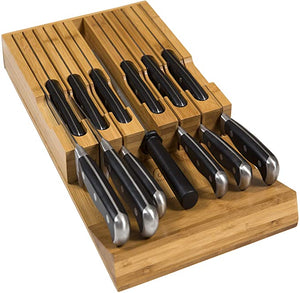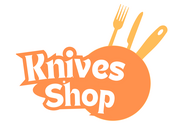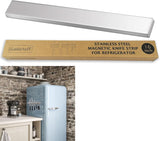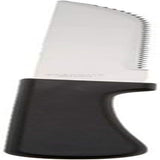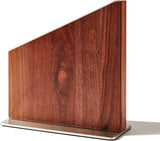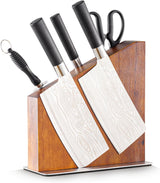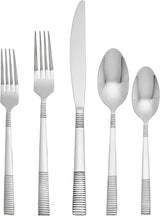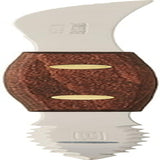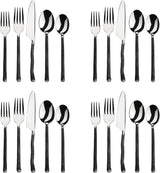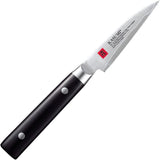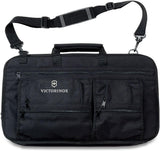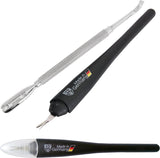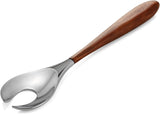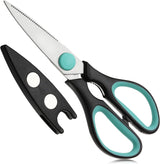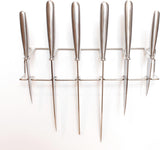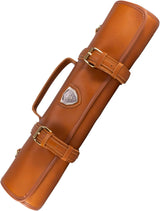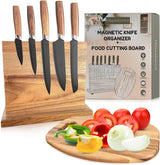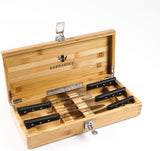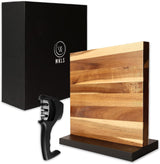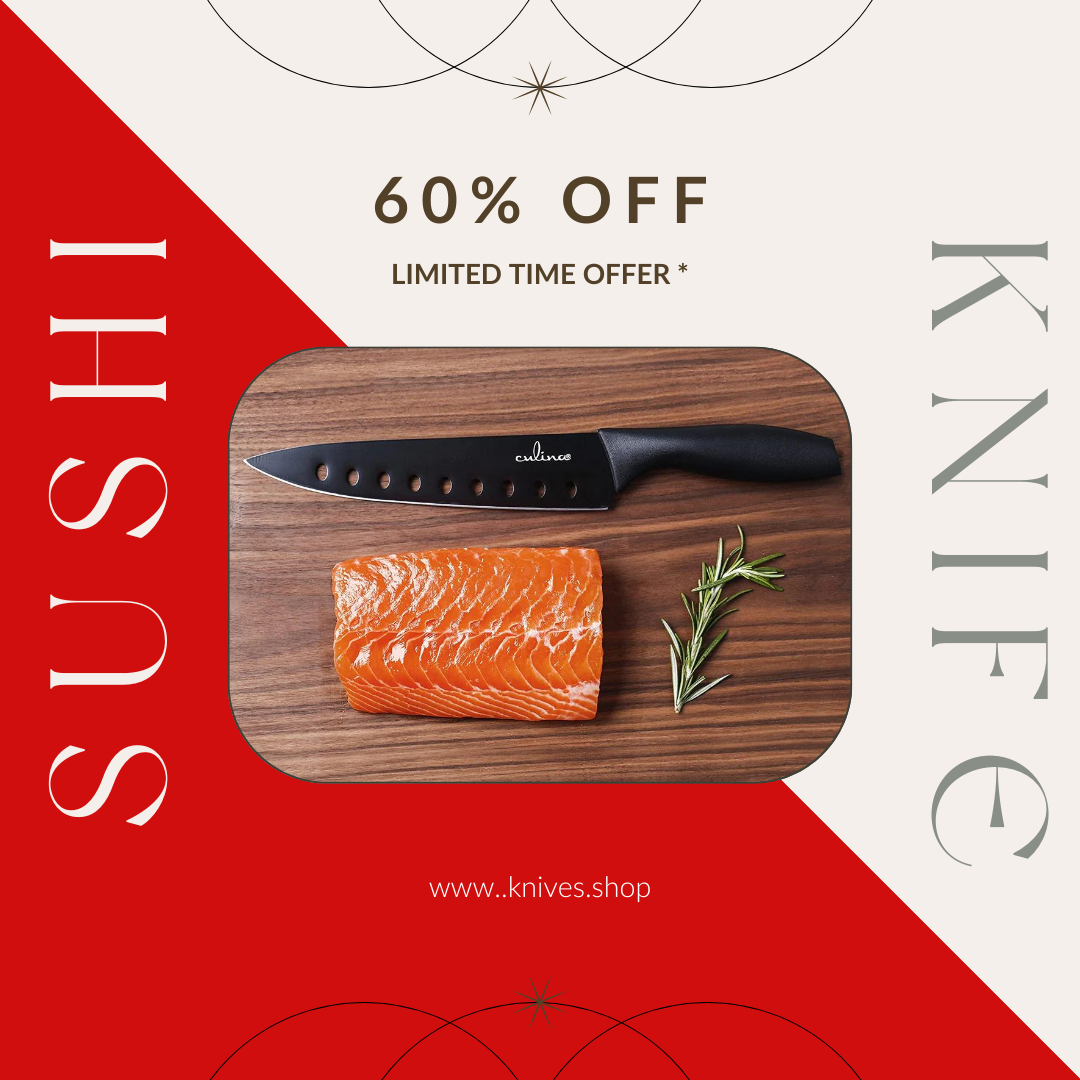Many knife users are uncertain about knife sharpening, therefore they wait longer than necessary before honing their blades.

Sharpening is a vital element of knife maintenance, but it also has various advantages when it comes to knife use. We'll go over the four key reasons why you should hone your knife before using it.
What Causes Knives to Lose Their Sharpness?
A knife's sharpness can be lost for a variety of causes; some are preventive, while others are due to normal use.
Knowing what causes a knife to lose its sharpness might help you be more aware of these problems when using or maintaining your blades.
The following are some of the reasons knives lose their sharpness:
A knife constructed of low-quality steel or soft steel will not maintain a sharp edge for long and will lose sharpness with each usage.
The knife will become dull if it is used on a hard surface.
When you use a knife to cut something it wasn't designed to cut, the blade will dull faster than expected or the cutting edge will be damaged.
A primary cause of a knife losing sharpness is not storing it in a way that protects the edge.
The manner in which a knife is cleansed might affect its sharpness.
The edge holding capabilities of the knife can be harmed if the secondary bevel is not honed to the correct angle.
Why should you sharpen a knife?
Knives are made to cut, which means they must have a sharp edge in order to accomplish their intended function! When the knife's edge isn't sharp, it has a number of consequences. Honing the knife before usage helps solve a lot of the problems that come with dull knives. Here are some of the reasons why you should sharpen a knife.
Safety of the knife user
A dull knife is dangerous to the person who is using it. When a knife gets dull, the added pressure necessary to cut through an item is a major worry.
When using a dull knife, the extra pressure or power required can cause the blade to slip or unexpectedly push through the item, cutting the person using the knife.
A dull knife may fail to cut through the item you're attempting to cut, but if the blade slips, the dull blade may still be sharp enough to cause a significant cut to your skin. The point of the knife could also pierce the thing being sliced and stab your hand.
When compared to a dull knife, a sharp knife will slice through the substance being cut with ease. Because less force is necessary to make the cut, the knife operator has better control over the slicing motion. Sharp blades are much safer to use than blunt knives because of this.
When slicing, a sharp knife prevents edge damage
You usually cut on top of a cutting board when processing components. If the knife is dull, you'll have to use more force to get it to cut through the components. When a poor knife is pushed through the ingredients, controlling the blade at the conclusion of the cut is difficult, and the knife's edge slams into the cutting board's surface.
While most current cutting boards are composed of materials that won't harm the knife's cutting edge if the knife hits it hard enough, it will be damaged. Sharpening a knife allows it to slide easily through the item being cut, requiring less force from the operator.
This allows the knife operator more control over the knife, allowing for a clean and gentle cut without damaging the knife's cutting edge by smashing it into the cutting board.
A sharp knife will not crush what it is slicing
When making meals in the kitchen, it is very important to use a sharp knife. A dull knife can not only compromise your safety, but it will also damage the outcome of the food you're making.
The ingredient must be pushed through with vigor with a dull knife. The extra pressure may crush the ingredient, causing the liquids to leak out and end up on your cutting surface. Because of the liquid loss, this crushing might result in a loss of flavor and cause the component to dry up throughout the cooking process.
You can save time by using a sharp knife
Sharp knives will slice through items being cut fast and efficiently. Instead of wasting so much time hacking through the material, this allows objects to be processed quickly.
This time savings is especially essential in professional kitchens, where dishes must be delivered on time and in acceptable condition.
Here are the three ways to check if your knife is sharp:
Paper: A sharp knife should quickly slice through a piece of paper in this test.
Tomato: Because tomatoes have a robust outer skin and a soft interior, a dull knife will squash them before breaking the skin.

Onion: Cut an onion's outer skin. It will be impossible to cut with a dull knife.
Best ways to sharpen knives
Electric knife sharpeners
The "course" and "fine" slots on an electric knife sharpener are similar to those on a manual knife sharpening, but the abrasives are on motorized wheels that revolve against the blade. Sharpening knives with an electric knife sharpener is far more efficient and precise than sharpening knives with a manual knife sharpener.
These machines are quite simple to operate. Always follow the directions provided by the manufacturer. In general, you have to turn on the sharpener, hold your knife securely but lightly (don't press down too hard; the machine will do the work for you), and slowly and smoothly pull the blade through the desired slots. Sharpen both sides of your blade by switching sides.
Whetstone
A whetstone is a rectangular stone with grits on one side and fine grits on the other. Sharpening a knife with a whetstone, also known as a sharpening stone, is by far the most precise method.
To begin, obtain a two-sided whetstone with a coarse on one side and a fine on the other. Depending on the manufacturer's standards, different knives require the knife's edge to be placed to the stone at a varied angle.
With the rough grit facing up, put the whetstone on a chopping board or countertop. To protect the stone from sliding, place a moist paper towel or dish towel underneath it.
Grab the knife by the handle with one hand and hold the knife's edge against the stone, point-first, with the cutting edge meeting the stone at a 22-degree angle.
With your other hand, you can keep the blade stable. Move the blade forward across the whetstone with moderate pressure, covering the full length of the blade and maintaining a consistent 22-degree angle against the stone.
Do this ten times, then flip the knife across and use the whetstone on the other side of the blade for ten strokes.
Switch to the fine grit side of the whetstone and give each edge of the blade 10 strokes.
Finish by honing the blade with a sharpening steel, then rinsing and wiping the knife dry to remove any metal.
Manual knife sharpeners
The easiest and cheapest way to maintain your kitchen knives is with a manual knife sharpener, commonly known as a "pull-through sharpening." A manual knife sharpener features two slots: one for sharpening and one for polishing.
Put the sharpener on a work surface or counter. To prevent the sharpener from shifting during operation, use your non-dominant hand to hold the handle with a strong grip. Within all fingers behind the heel, grasp the knife by the handle. Start with the coarse slot on a multi-stage sharpener.
The knife should be inserted into the groove closest to the heel. With minimal pressure, pull the blade easily through the slot toward yourself.
To follow the shape of the blade, lift the handle as you near the tip. Each pull should not be more than one or two seconds. Rep these processes until a burr appears along the blade's edge.
To eliminate any remaining metal filings, wash the knife with mild soap and water and brush dry.
Honing steel
These ridged steel rods are an important aspect of knife maintenance, as they help maintain blades sharp until it's time to sharpen them (sort of like brushing your teeth between cleanings). Honing, unlike sharpening, does not remove metal fibers. Instead, the friction created by moving your knife down the surface of honing steel helps to straighten and align bent metal fibers on the knife's edge.
Your knife's edge will quickly go dull if you don't hon it. However, honing a knife before each use, or at least every few uses, can help you go longer between sharpening sessions.
When sharpening knives, remember these five safety precautions:
Sharpening knives puts your fingers in danger in the same way that cutting food does, so take these precautions:
Never let your fingertips come into contact with the blade.
To be extra safe, use kitchen gloves.
If you're using a whetstone, make sure you're holding it in place or that it's secured to the table with a rubber mat or damp paper towels folded underneath it.
Remove any residual steel shavings with a moist sponge or dish towel after sharpening.
There are endless ways to sharpen your knives, and what works best will depend on the type of knife you have, and how it has been put to use. The most important thing to remember is this: consistency is key. Practicing the same method over and over again is a good way to develop a routine that will be useful, not only in sharpening your knives but in maintaining their edge as well.
